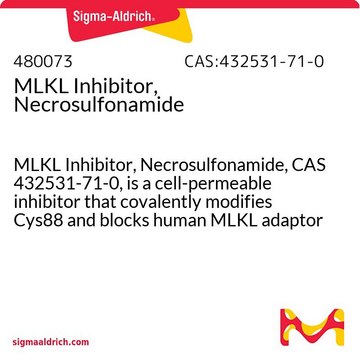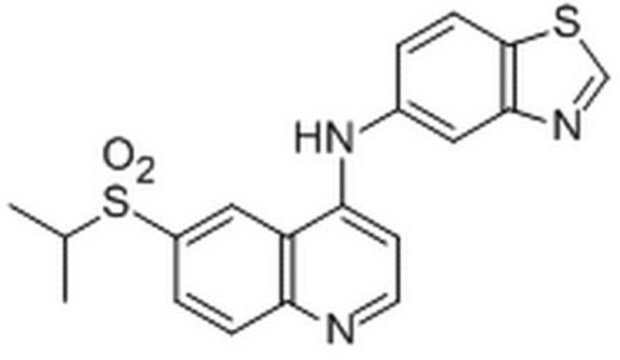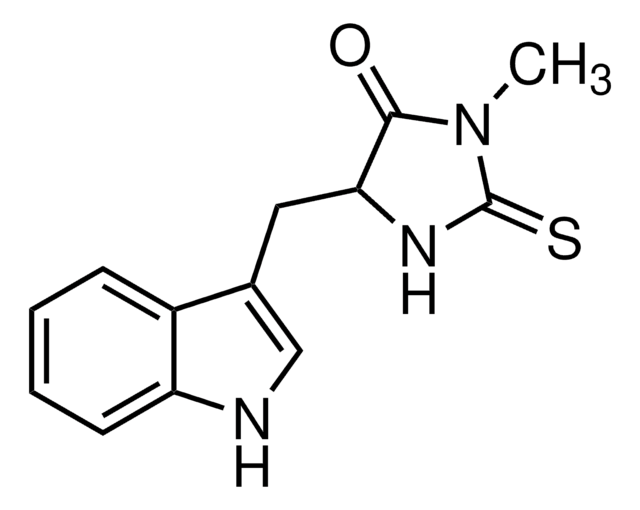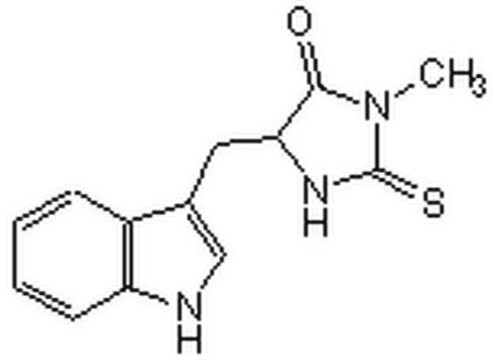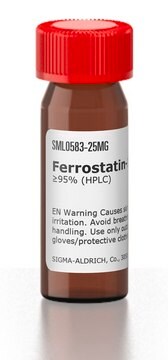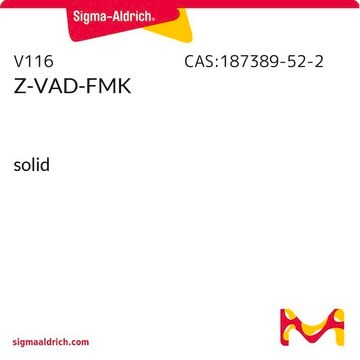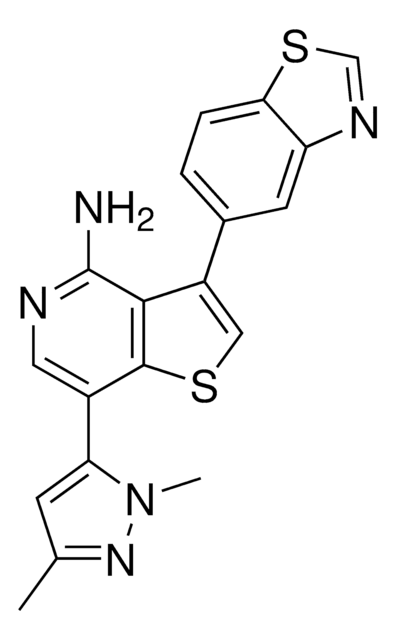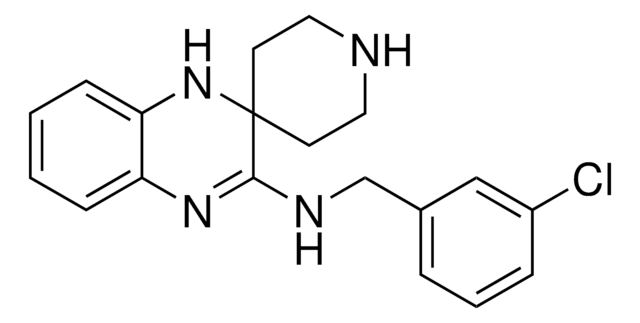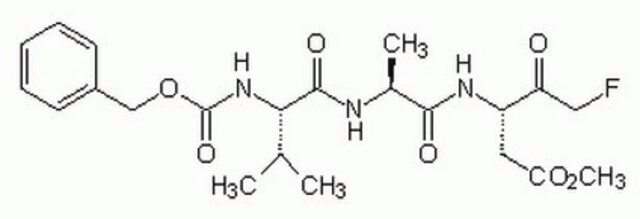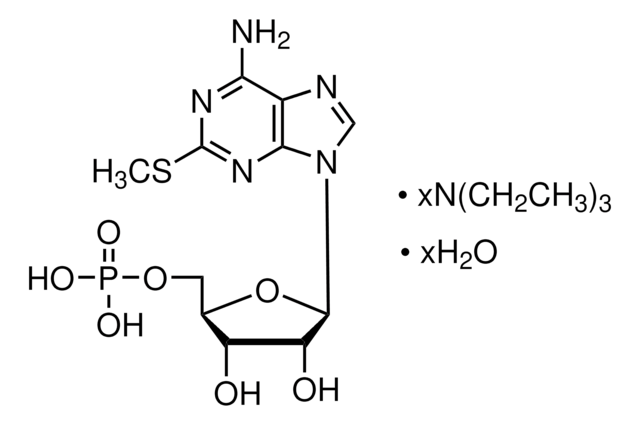추천 제품
분석
≥98% (HPLC)
양식
powder
색상
white to beige
solubility
DMSO: 2 mg/mL, clear
저장 온도
2-8°C
SMILES string
O=C(C(C)(C)C)N1[C@H](C2=CC=CC=C2)CC=N1
생화학적/생리학적 작용
Brain-penetrant, highly potent and selective RIPK1 (RIP1) inhibitor with necroptosis blocking efficacy in vitro and in vivo.
GSK′963 (GSK′963A) is a brain-penetrant, highly potent and selective ATP site-targeting receptor-interacting protein 1 kinase (RIP1; RIPK1) inhibitor (IC50 = 0.8-8 nM with 50 μM ATP; IC50 >10 μM against RIPK2/3/5 and 335 other kinases) that protects against TNFα/zVAD-induced necroptosis (EC50 = 1/4 nM in mouse L929/human U937 cultures) and blocks Y. pestis-induced death of murine fetal liver macrophages (1 μM). GSK′963 prevents lethal hypothermia by acute sterile shock (2 mg/kg i.p. 15 min prior to TNFα/zVAD i.v.) and protects against acute neuronal death upon autologous blood intracerebral hemorrhage induction in mice in vivo (25 mg/kg/3 hr i.p.).
Storage Class Code
11 - Combustible Solids
WGK
WGK 3
Flash Point (°F)
Not applicable
Flash Point (°C)
Not applicable
가장 최신 버전 중 하나를 선택하세요:
Sevda Lule et al.
Stroke, 48(9), 2549-2556 (2017-08-03)
Recent studies using cultured cells and rodent intracerebral hemorrhage (ICH) models have implicated RIPK1 (receptor interacting protein kinase-1) as a driver of programmed necrosis and secondary injury based on use of chemical inhibitors. However, these inhibitors have off-target effects and
Hongyan Guo et al.
Cell host & microbe, 17(2), 243-251 (2015-02-13)
Herpes simplex virus (HSV)-1 and HSV-2 are significant human pathogens causing recurrent disease. During infection, HSV modulates cell death pathways using the large subunit (R1) of ribonucleotide reductase (RR) to suppress apoptosis by binding to and blocking caspase-8. Here, we demonstrate
Anne von Mässenhausen et al.
Cell death & disease, 9(3), 359-359 (2018-03-04)
Receptor-interacting protein kinases 1 and 3 (RIPK1/3) have best been described for their role in mediating a regulated form of necrosis, referred to as necroptosis. During this process, RIPK3 phosphorylates mixed lineage kinase domain-like (MLKL) to cause plasma membrane rupture.
Mohammad Ali et al.
Cell death & disease, 9(3), 346-346 (2018-03-03)
Proteasome inhibitors have achieved clinical success because they trigger intrinsic and extrinsic cell death to eliminate susceptible human cancers. The ubiquitin-proteasome protein degradation system regulates signaling pathways by controlling levels of components such as cellular inhibitor of apoptosis (cIAP)1 and
Alessandro Annibaldi et al.
Molecular cell, 69(4), 566-580 (2018-02-18)
Tumor necrosis factor (TNF) can drive inflammation, cell survival, and death. While ubiquitylation-, phosphorylation-, and nuclear factor κB (NF-κB)-dependent checkpoints suppress the cytotoxic potential of TNF, it remains unclear whether ubiquitylation can directly repress TNF-induced death. Here, we show that
자사의 과학자팀은 생명 과학, 재료 과학, 화학 합성, 크로마토그래피, 분석 및 기타 많은 영역을 포함한 모든 과학 분야에 경험이 있습니다..
고객지원팀으로 연락바랍니다.